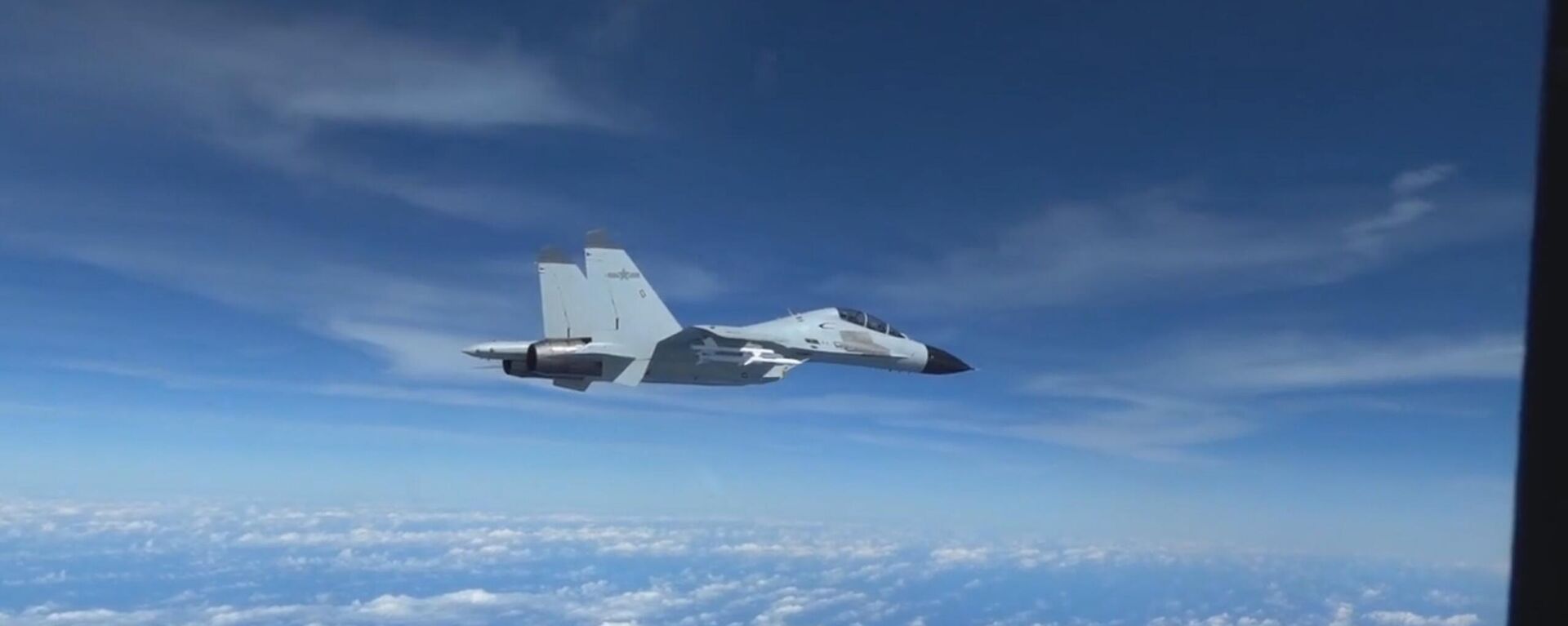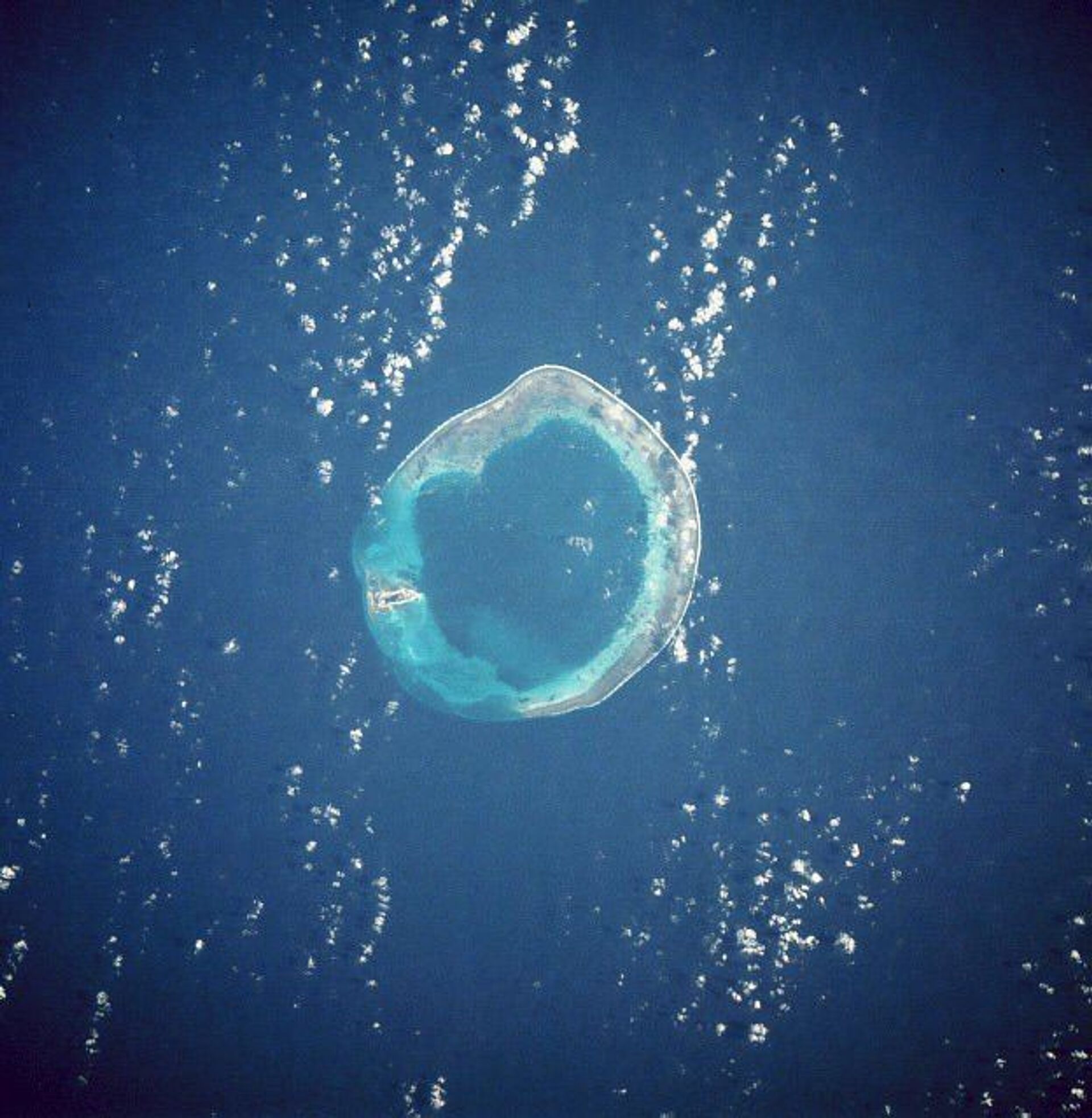https://sputnikglobe.com/20230515/us-and-china-had-secret-submarine-showdown-near-hong-kong-around-jan-6-events---report-1110384416.html
US, China Had Secret Submarine Showdown Near Hong Kong Around Jan. 6 Events - Report
US, China Had Secret Submarine Showdown Near Hong Kong Around Jan. 6 Events - Report
Sputnik International
The cat-and-mouse game between US and Chinese forces off the Chinese coast reached a dangerous point on January 5, 2021, when US aircraft began harassing Chinese submarines, prompting a Chinese show of force.
2023-05-15T18:38+0000
2023-05-15T18:38+0000
2023-05-15T19:24+0000
world
south china sea
submarine
us-china relations
pratas island (dongsha)
mark milley
https://cdn1.img.sputnikglobe.com/img/104932/71/1049327143_0:39:4000:2289_1920x0_80_0_0_a59cc06ccec9ddf40b4fad531ea0b6c2.jpg
The incident was recently revealed by a Chinese journal, although the report was sparse on the details. According to the outlet, three US Navy aircraft launched an intense hunt for Chinese submarines in the waters between Hong Kong and the ring-shaped atoll known in English as Pratas and in Chinese as Donsha, about 190 miles off the Chinese coast.The People's Liberation Army (PLA) was conducting naval exercises in the area at the time and after the US aircraft dropped a slew of sonar buoys designed to pinpoint the location of submarines, the Chinese military dispatched a force to the region, the consist of which remains classified.The sonars were dropped close to Pratas, which is controlled by the government in Taiwan, which enjoys unofficial US backing but is regarded by Beijing as an illegitimate rebel force on Chinese soil, adding another provocative element to the already-dangerous incident. As the US and Chinese forces came closer together, the US aircraft began destroying their own sonar buoys to prevent them from falling into Chinese hands, where they might be analyzed for their weaknesses.At one point during the showdown, one of the US aircraft flew just 93 miles from Hong Kong - one of the closer passes made to the Chinese coast by US surveillance aircraft.US Aircraft Comb South China SeaThe US aircraft were not named in the report, but according to the South China Sea Probing Initiative (SCSPI), a Beijing-based think tank focused on the waterway, the US Navy flew two kinds of sub hunters over the South China Sea that month: the P-8A Poseidon, a maritime patrol aircraft based on the Boeing 737 but modified to carry specialized sub-hunting equipment like sonar buoys and torpedoes, and the P-3 Orion, an older aircraft that also carries a magnetic anomaly detector for spotting the distortions in Earth’s magnetic field produced by a large steel object, such as a submarine.The SCSPI recorded 70 US spy plane sorties across the South China Sea in January 2021, including four on January 5, the day of the showdown, although its data did not say which planes flew that day.Those sorties have continued, with SCSPI reporting 58 such missions last month, including submarine hunters like the P-8A Poseidon, as well as signals intelligence and radar emissions monitoring aircraft.Fears of Attempted US ProvocationThe January 2021 showdown didn’t happen in a vacuum, though: tensions were already sky-high between Washington and Beijing, and the events of the following day only sent them higher.On January 6, thousands of Trump supporters breached the US Capitol Building in Washington, DC, as Congress was certifying the results of the November 2020 US presidential election. Trump had claimed his loss in the election was illegitimate due to fraud by the Democrats and encouraged his followers to "Stop the Steal."Their efforts failed and the demonstrators were cleared from the legislative building by police and US troops, who garrisoned the capital city with more than 25,000 men in the aftermath.US military leaders spoke with their Chinese counterparts several times during that period in an attempt to defuse tensions, one of which came two days after the insurrection, on January 8, 2021. US Gen. Mark A. Milley, the Chairman of the US Joint Chiefs of Staff, spoke on the phone for 90 minutes with his Chinese counterpart, PLA Gen. Li Zuocheng, chief of the Joint Staff Department of the Central Military Commission, to reassure him that the US military would not allow another attempted seizure of power. Milley later described him as "unusually rattled."Afterward, Milley reportedly told US Navy Adm. Philip S. Davidson, the commander of US Indo-Pacific Command, canceled operations that the Chinese "might see as provocative" in a further effort to calm things down in the region in the wake of the January 5 showdown near Pratas.Beijing regards Taiwan as a rebellious Chinese province destined to be reunited with the mainland, and thus sees US support for Taiwan as interference in internal Chinese affairs. That is also why the January 5 incident was so provocative: Taiwan controls Pratas and has long feared a PLA seizure of the island, which has no permanent residents, would serve as a prelude to a full invasion of Taiwan itself.
https://sputnikglobe.com/20230224/pla-fighter-jet-confronts-us-navy-spy-plane-with-cnn-crew-aboard-over-south-china-sea-1107782664.html
https://sputnikglobe.com/20230512/sullivan-tells-chinas-wang-yi-us-wants-to-move-beyond-balloon-incident-1110300515.html
south china sea
pratas island (dongsha)
Sputnik International
feedback@sputniknews.com
+74956456601
MIA „Rossiya Segodnya“
2023
News
en_EN
Sputnik International
feedback@sputniknews.com
+74956456601
MIA „Rossiya Segodnya“
Sputnik International
feedback@sputniknews.com
+74956456601
MIA „Rossiya Segodnya“
hong kong; submarine; january 6; china
hong kong; submarine; january 6; china
US, China Had Secret Submarine Showdown Near Hong Kong Around Jan. 6 Events - Report
18:38 GMT 15.05.2023 (Updated: 19:24 GMT 15.05.2023) The cat-and-mouse game between US and Chinese forces off the Chinese coast reached a dangerous point on January 5, 2021, when US aircraft began harassing Chinese submarines, prompting a Chinese show of force. The showdown happened amid a backdrop of high anxieties about the prospect of then-US President Donald Trump starting a war.
The incident was recently revealed by a Chinese journal, although the report was sparse on the details. According to the outlet, three US Navy aircraft launched an intense hunt for Chinese submarines in the waters between Hong Kong and the ring-shaped atoll known in English as Pratas and in Chinese as Donsha, about 190 miles off the Chinese coast.
The People's Liberation Army (PLA) was conducting naval exercises in the area at the time and after the US aircraft dropped a slew of sonar buoys designed to pinpoint the location of submarines, the Chinese military dispatched a force to the region, the consist of which remains classified.
The sonars were dropped close to Pratas, which is
controlled by the government in Taiwan, which enjoys unofficial US backing but is regarded by Beijing as an illegitimate rebel force on Chinese soil, adding another provocative element to the already-dangerous incident. As the US and Chinese forces came closer together, the US aircraft began destroying their own sonar buoys to prevent them from falling into Chinese hands, where they might be analyzed for their weaknesses.
At one point during the showdown, one of the US aircraft flew just 93 miles from Hong Kong - one of the closer passes made to the Chinese coast by US surveillance aircraft.
US Aircraft Comb South China Sea
The US aircraft were not named in the report, but according to the South China Sea Probing Initiative (SCSPI), a Beijing-based think tank focused on the waterway, the US Navy flew two kinds of sub hunters over the South China Sea that month: the P-8A Poseidon, a maritime patrol aircraft based on the Boeing 737 but modified to carry specialized sub-hunting equipment like sonar buoys and torpedoes, and the P-3 Orion, an older aircraft that also carries a magnetic anomaly detector for spotting the distortions in Earth’s magnetic field produced by a large steel object, such as a submarine.
The SCSPI recorded 70 US spy plane sorties across the South China Sea in January 2021, including four on January 5, the day of the showdown, although its data did not say which planes flew that day.

24 February 2023, 20:47 GMT
The US Navy has
dramatically increased its surveillance of the South China Sea in recent years after the Pentagon named the waterway as the likely locale for a showdown between Washington and Beijing, both politically and militarily. Several
nations have overlapping territorial and maritime claims on island chains in the region, the largest of which is China’s, delineated by a “nine-dash line” that encompasses the majority of the South China Sea.
Those sorties have continued, with
SCSPI reporting 58 such missions last month, including submarine hunters like the P-8A Poseidon, as well as signals intelligence and radar emissions monitoring aircraft.
Fears of Attempted US Provocation
The January 2021 showdown didn’t happen in a vacuum, though: tensions were already sky-high between Washington and Beijing, and the events of the following day only sent them higher.
On January 6, thousands of Trump supporters breached the US Capitol Building in Washington, DC, as Congress was certifying the results of the November 2020 US presidential election. Trump had claimed his loss in the election was illegitimate due to fraud by the Democrats and encouraged his followers to "Stop the Steal."
Their efforts failed and the demonstrators were cleared from the legislative building by police and US troops, who garrisoned the capital city with more than 25,000 men in the aftermath.
However, for Beijing, the concern was far greater: since several months before the election, senior Chinese military brass had feared Trump might try to hold onto power by provoking some kind of incident that would give him emergency powers. One of the scenarios most feared was an attack on Chinese positions in the South China Sea, or an attempt to goad Chinese forces there into attacking US forces.
US military leaders spoke with their Chinese counterparts several times during that period in an attempt to defuse tensions, one of which came two days after the insurrection, on January 8, 2021. US Gen. Mark A. Milley, the Chairman of the US Joint Chiefs of Staff, spoke on the phone for 90 minutes with his Chinese counterpart, PLA Gen. Li Zuocheng, chief of the Joint Staff Department of the Central Military Commission, to reassure him that the US military would not allow another attempted seizure of power.
Milley later described him as "unusually rattled."
Afterward,
Milley reportedly told US Navy Adm. Philip S. Davidson, the commander of US Indo-Pacific Command, canceled operations that the Chinese "might see as provocative" in a further effort to calm things down in the region in the wake of the January 5 showdown near Pratas.
While Chinese anxieties relaxed somewhat after Trump left office later that month and US President Joe Biden was sworn in, tensions between Washington and Beijing have remained high. Biden’s administration has kept to the strategy laid out by Trump for "great power competition" with Russia and China, stepping up diplomatic efforts to isolate China internationally and increasing US military support for Taiwan.
Beijing regards Taiwan as a rebellious Chinese province destined to be reunited with the mainland, and thus sees US support for Taiwan as interference in internal Chinese affairs. That is also why the January 5 incident was so provocative: Taiwan controls Pratas and has long feared a
PLA seizure of the island, which has no permanent residents, would serve as a prelude to a full invasion of Taiwan itself.





